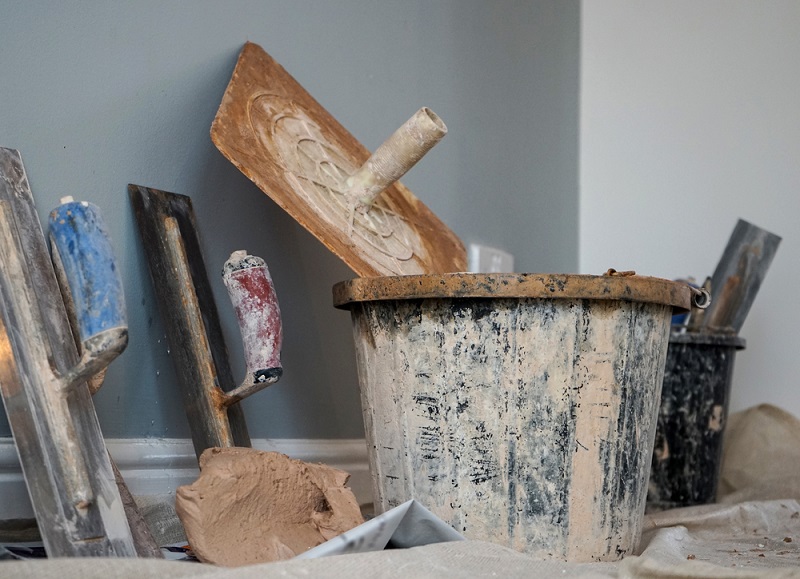Plastering the walls of the building is a very ancient technique to create a smooth finish on walls, which originally uses a combination of gypsum, water, and sand. This is applied as a coating on the ceiling, walls, and other areas of a home. It hardens on getting dried up. This is done to decorate as well as cover up rough surfaces of walls, and on rough wall surfaces. You can always scrape off an extra layer of plaster when you have the right hawk trowel. Either the plastering specialists work with it or else, you can also use it as part of the DIY methods.

The equipment needed to plaster the wall
Plastering renders a smooth finish and also provides a decorative touch to the walls and exterior, ceilings, or any other surface of a home. You can easily smoothen the surface of a wall or ceiling during plastering when you have the right set of hawk trowels.
The first tool that one can think of for plastering is a hawk trowel. There are other tools like:
- Putty knife
- Snip
- Plastering brush
- Plastering spatula
- Floats
- Multi-tool
- Floor screed
The combination of hawk trowel consists of two separate pieces of equipment but requires each other for plastering. The plastering trowel refers to the flat rectangle metal tool, with a handle extended up and above the surface angle of the plate. Plaster is quickly scraped from hawk to trowel followed by applying it on the wall. If it is the usability of the hawk trowel that you want to know, then the first thing that you should look for is the scooping technique that reduces the pressure on your hand and you can also use a corner trowel to level the layers of extra cement and concrete.
The usage of hawk trowel requires a lot of practice by the plasterers so that they can do the job without dropping and wasting plaster, and also an experienced hand.
While using a hawk trowel, materials such as stucco, cement, plaster, or even drywall mud in small mounds

Application area of hawk trowel
Every plastering tool has unique usage and area of application like hawk trowel find its application mostly in creating drywall texture, resulting in unique designs, depending on the plasterer’s experience and expertise. On the other hand, the tapers and knives are used for taping and finishing drywall.
Trowels
One of the fundamental tools to apply plaster on the walls is a hawk trowel, and a plastering trowel is used to apply and spread the plaster on a wall. The plastering trowels are found in different sizes and choosing the right size according to one’s ability is the key to good plastering.
- The trowels come in both short and long sizes, and the size to be chosen depends on one’s efficiency and experience. For a beginner using hawk trowel, the trowel should preferably be small ones, like 11 to 12 inches in size. This site will help a novice plasterer to have more control over the tool and will not leave ugly trowel marks on the wall, rather will end in a flat and fine finish.
- The trowel one should choose needs to have a handle with a strong grip and a good build quality.
Hawks

Hawks also constitute a simple yet important tool for plasterers, making it convenient for them to apply the plaster. This helps to put a small amount of plaster on the plate after it is scooped out by a trowel. It is advisable to buy a lightweight hawk, as holding a hawk for hours can cause muscle discomfort.
Choose the perfect hawk trowel that can increase the efficiency and give a good quality plastering finish to walls.






